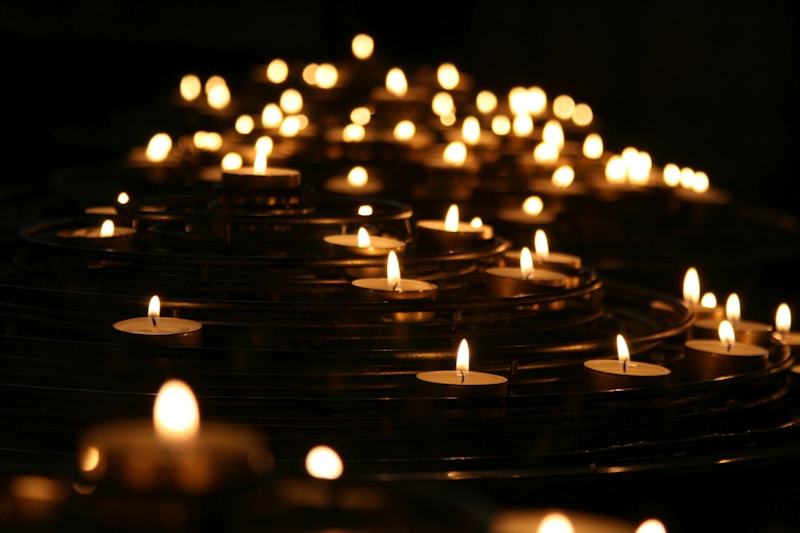Illuminate Your Space: Why Energy-Efficient Pendant Light Bulbs Are a Game-Changer
Illuminate Your Space: Why Energy-Efficient Pendant Light Bulbs Are a Game-Changer
Introduction to Energy-Efficient Pendant Light Bulbs
As the world becomes increasingly conscious of energy consumption and environmental protection, energy-efficient pendant light bulbs have emerged as a popular choice among homeowners and businesses alike. These innovative bulbs not only provide excellent lighting options but also contribute to significant savings on energy bills. In this article, we will explore the advantages of energy-efficient pendant light bulbs, their different types, and how best to integrate them into various settings.
The Benefits of Energy-Efficient Pendant Light Bulbs
Energy-efficient pendant light bulbs come with a multitude of benefits that make them an attractive lighting choice. Here are some of the key advantages:
- Lower Energy Bills: These bulbs use significantly less electricity compared to traditional incandescent lights, leading to lower monthly energy costs.
- Longer Lifespan: Energy-efficient bulbs typically last significantly longer, reducing the need for frequent replacements.
- Environmental Impact: By using less energy, these bulbs contribute to a decrease in greenhouse gas emissions, making them an environmentally friendly option.
- Versatile Designs: Pendant lights are available in various styles and designs, making it easy to find fixtures that suit your Home decor.
Types of Energy-Efficient Pendant Light Bulbs
Not all energy-efficient bulbs are created equal. Here are the most common types:
| Bulb Type | Description | Energy Savings |
| Compact Fluorescent Lamps (CFLs) | CFLs are designed to replace incandescent bulbs and offer a substantial reduction in energy usage. | Up to 75% less |
| Light Emitting Diodes (LEDs) | LEDs have become the gold standard for energy efficiency, providing high-quality light with minimal power consumption. | Up to 80% less |
| Halogen Bulbs | While still more efficient than traditional incandescent bulbs, halogen lights use slightly more energy than CFLs and LEDs. | 30% less |
Choosing the Right Energy-Efficient Pendant Light Bulbs
Selecting the right bulb can enhance the overall ambiance of your room. Here are some tips for making the best choice:
1. Consider Your Space
The size and design of your room should dictate the type and size of pendant light you choose. A large kitchen island may benefit from multiple fixtures, while a small dining area might only need one.
2. Evaluate Brightness Levels
The brightness of a bulb is measured in lumens. For example, a standard bulb of 60 watts gives off about 800 lumens. Make sure to choose a bulb that provides adequate light for your intended space.
3. Light Color and Ambiance
Energy-efficient bulbs come in a range of color temperatures, from warm yellow to cool white. For cozy atmospheres, opt for warmer tones (2700K-3000K), whereas cooler tones (4000K-5000K) are better for task-oriented environments.

Integrating Pendant Light Bulbs into Your Home or Business
When incorporating energy-efficient pendant light bulbs into your space, consider the following ideas:
1. Dining Areas
Pendant lights over dining tables create a warm and inviting ambiance. Multiple pendants can be used to provide even lighting, ensuring no one is left in the shadows.
2. Kitchen Islands
Use pendant lights to illuminate kitchen islands effectively. This placement not only provides necessary light for cooking but also adds a stylish element to your kitchen decor.
3. Living Rooms
In living spaces, pendant lights can serve as statement pieces while providing soft ambiance. Ensure they hang at the correct height to avoid interference with daily activities.
Installation Tips for Energy-Efficient Pendant Light Bulbs
Installing pendant light fixtures can be a straightforward process. However, here are some best practices to ensure a seamless setup:
1. Safety First
Always turn off the power before beginning the installation process. Use a voltage tester to ensure that there is no electrical current flowing through the wires.
2. Use the Right Tools
Gather the necessary tools, such as screwdrivers, wire strippers, and electrical tape, to facilitate a smooth installation process.
3. Follow Manufacturer Instructions
Adhere closely to the manufacturer’s instructions for installation. If uncertain, consider hiring a licensed electrician to ensure compliance with safety standards.
Energy-Efficient Pendant Light Bulbs: FAQs
Here are some common questions people ask about energy-efficient pendant light bulbs:
1. How do energy-efficient bulbs compare to traditional bulbs in terms of brightness?
Energy-efficient bulbs provide the same amount of light as traditional incandescent bulbs while using significantly less energy.
2. Are energy-efficient pendant light bulbs more expensive upfront?
Yes, the upfront cost of energy-efficient bulbs is usually higher, but their lifespan and energy savings make them more economical in the long run.
3. Can I use dimmer switches with energy-efficient bulbs?
Many energy-efficient bulbs, particularly LEDs, are compatible with dimmer switches, but it’s crucial to check compatibility before purchasing.
Conclusion
In summary, energy-efficient pendant light bulbs are not only a smart choice for saving energy and reducing costs, but they also enhance the aesthetic appeal of your living or working space. By considering factors such as bulb type, brightness, and installation methods, you can transform your environment into a well-lit, inviting haven.
Before making a purchase, always evaluate your specific needs and consult with professionals if necessary. The investment in energy-efficient lighting is not just good for your wallet—in time, it contributes positively to the environment and supports a more sustainable future. Choose wisely, and let your spaces shine brightly with the light of tomorrow!
